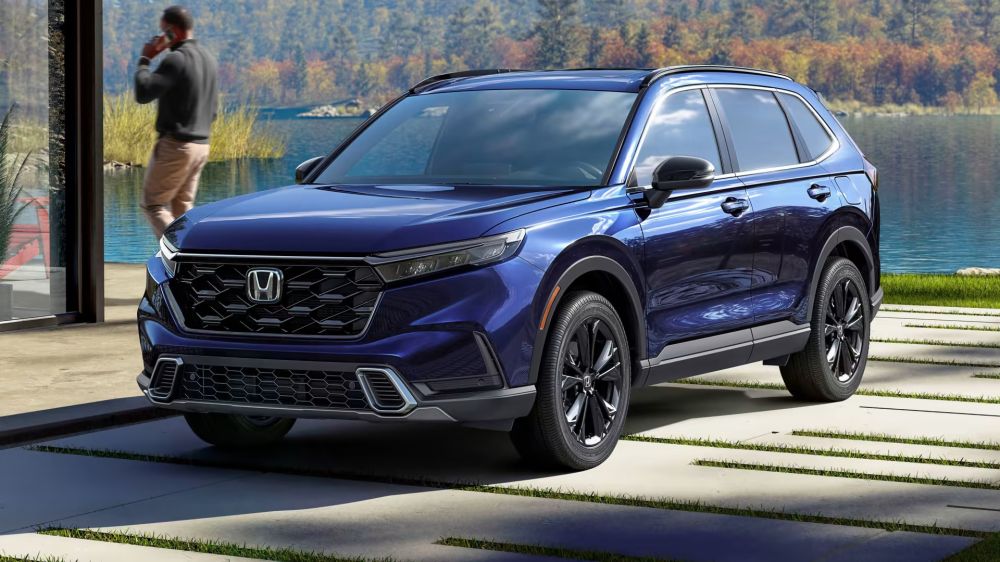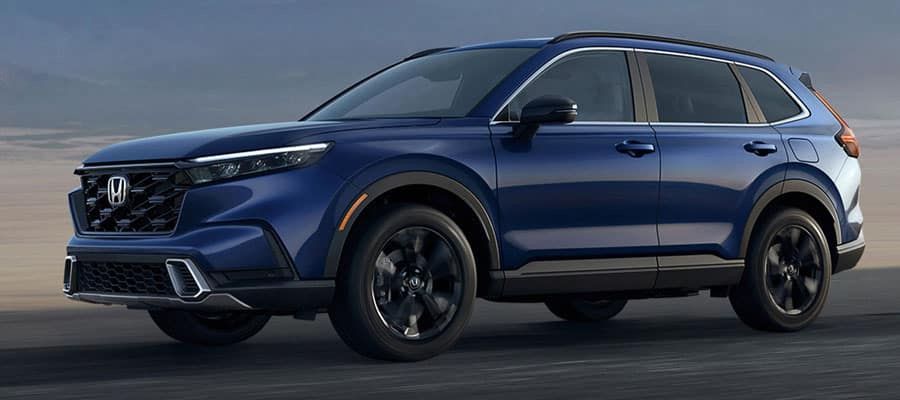
Honda firmly back in the family SUV race
HONDA is back with a new SUV that has the potential to put the low-key company firmly back on family-van shopping lists and perhaps even redeem a lost decade where it appeared to simply tread water.

Long-time followers of innovative car-makers will clearly remember that Honda was Japan’s leading manufacturer of cleverly designed and built vehicles, including motorcycles that crushed Britain’s sales crown, Formula One winners, marine and power-tool engines and cars that created mainstream genres as witnessed by the first Civic hatchback of 1976, city-focused Scamp and one to take on the exotic Europeans, the NSX.
And then it all compacted into a range of so-so products that appealed to commuters, some less adventurous families, but little else. Worse, the model range was reduced and many disappeared — remember the Honda Jazz hatch or Odyssey people mover?— and then Honda Australia reduced the number of vehicles it imported, and then changed its retail model to base it more around a factory outlet.
But things are improving. There is a new medium SUV coupe (ZR-V) to compete with the CR-V, the smaller HR-V, and a new Civic and Accord to attract a broader audience.
The CR-V carries over a fair bit from the previous model, including the drivetrain, but importantly the new model brings a lot of refinement improvements along with more cabin space, better features and technology, and the option of a hybrid, albeit at a premium price.
Likely to be the most popular variant is the mid-spec VTi-L five seat tested here. It costs $48,800 drive away. If you want a seven seater, it will cost an additional $4200.
For families, the latest CR-V is a solid entrant and more than competitive with the longstanding rivals that include the Toyota RAV4, Nissan X-Trail, Mazda CX-5, Mitsubishi Outlander and even newer SUVs, particularly the Haval H6.
How much?
Honda has launched the CR-V in seven variants, priced from $44,500 through to $59,900. Prices include all on-road costs so they’re drive away, no more to pay.
The CR-V is available as a five-seat or seven-seat, front-wheel drive or all-wheel drive, and all except the sole hybrid example has the same 1.5-litre four-cylinder petrol engine.
Honda’s new agency retail model also puts the onus on the factory, so there’s some changes to how the car is sold. The pricing is nationwide and it’s fixed - there’s no haggling - and to simplify matters, there’s no options (other than colours) and even metallic paint doesn’t cost anymore.
On top of that, the capped price service charges are cheap — $199 a year for the first five years — so ownership cost is a very attractive feature.
How Big?
The CR-V is on par with its rivals in terms of fitting into a garage, although it’s a bit longer than the previous model.
It has grown 184mm in length, 116mm in width and 6mm in height. The wheelbase is up 81mm which gives it improved space for occupants and cargo.
The turning circle is a bit wide at 12m (the outgoing CR-V was 10.6m) which is only redeemed by the excellent visibility from the driver’s seat and the crisp resolution of the rearview camera.
The boot has a decent 589 litres of space in the five-seat model with the rear seat in position. Drop the seat and it expands to 1072 litres and pack the luggage to the roof and you’ll fit 1671 litres.
The seven seater has less room with a mere 150 litres (three rows up), then 472 litres (third row flat), 840 litres (two rear rows flat, and finally 1488 litres when luggage is stacked to the headliner.
Buyers should be aware that the five-seat versions get a full-size, alloy wheel spare while the seven seat and all-wheel drive variants have a space-saver spare. The hybrid has a tyre repair kit.
How fast?
I hope you’re not expecting much because although it’s smooth and the engine delivery is refined, it’s no powerhouse.
The 1.5-litre four-cylinder turbocharged petrol engine offers 140kW and 240Nm which is modest and simply suits its intended suburban-based market.
The drivetrain is carried over but clearly there’s work done on engine internals and body sound deadening because it feels smoother and less stressed.
Much of that is attributed to some refinement done to the continuously-variable transmission (CVT). This is a stemless automatic that is often criticised because it makes the engine sound like it’s over-revving.
But Honda has successfully subdued that impression and the result is a CVT that is hard to criticise.
It also helps keep the fuel consumption to a minimum. The CR-V is a very comfortable package both in the suburbs and on the open road. The engine is clearly unstressed while the suspension is compliant and although firmer than some rivals, is never harsh and always gives a confident impression.
How thirsty?
Honda claims the new CR-V will get as low as 7.1 litres/100km. On test, the slightly heavier VTi-L five-seat returned a pleasing 7.6 L/100km. It runs on the cheapest 91RON petrol and feeds from a 57 litre tank, ostensibly giving a range of 750km.
What’s inside?
The CR-V gets a comprehensive tech inventory with all variants having a 9.0-inch infotainment touchscreen with wireless Apple CarPlay and wired Android Auto, digital radio, eight speakers, active noise cancellation and a wireless phone charger.
Also across the board is five years of free access to Honda Connect which uses the owners’ smart phones to have remote connection to features you may or not need — remote engine start, remote lock and unlock, vehicle alarm and vehicle condition updates.
It also links to emergency services in the event of the car having a crash. The VTi L tested here also adds factory satellite navigation.
The cabin also gets black leather seat trim, leather for the steering wheel and gearshift, front heated seats, electric adjustment for the passenger seat while outside there’s 18-inch wheels.
How safe?
The CR-V has not as yet been crash tested so no star rating from ANCAP. It does well on paper, though, with upgrades over the previous model to the comprehensive safety suite that includes autonomous emergency braking, pedestrian and cyclist detection, lane-keep assist, lane-departure warning and lane-centring assist.
It also has blindspot monitoring, rear cross-traffic alert, adaptive cruise control with stop-and-go, traffic sign recognition, auto headlights and wipers, and an auto-dimming interior rear-view mirror.
The CR-V also has 11 airbags, adding five new ones over the previous model for the driver and passenger knee airbags, rear seat aide airbags and a centre airbag between the front seats.
Service costs?
More good news is the ownership costs which start with the capped price service program at a very welcome $199 for each service for the first five years. The CR-V has a five-year, unlimited distance warranty and a five-year roadside assistance cover.
Rivals?
GWM Naval H6 2.0 GT Lux: $40,990
Kia Sportage 2.0 SX+: $42,050*
Hyundai Tucson 2.0 Elite: $40,650*
Mazda CX-5 Maxx Sport: $40,310*
Mitsubishi Outlander LS: $41,240*
Nissan X-Trail ST-L: $43,690*
Toyota RAV4 GXL: $43,310*
* plus on-road costs
Pricing?
The Honda VTi-L five seater is listed at $48,800 drive away.
Once you've found the right car, the next step is sorting out car finance that actually works for your budget. Credit One is Australia's best-reviewed finance broker, with 3,000+ five-star Google reviews from customers who've been through the process. Check out Credit One reviews to see what people say, or head straight to the loan repayment calculator to see what the numbers look like.